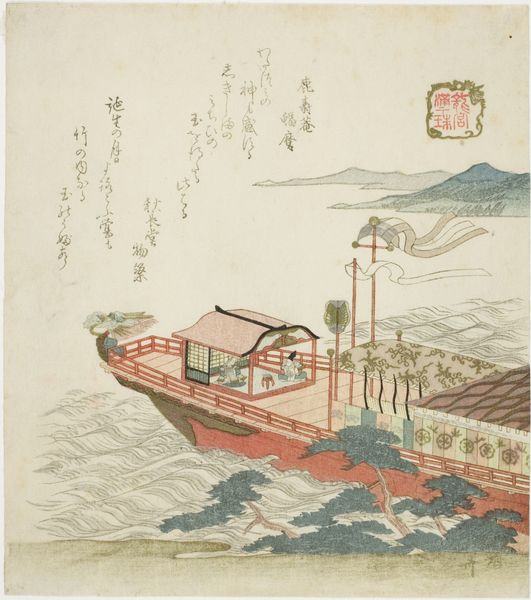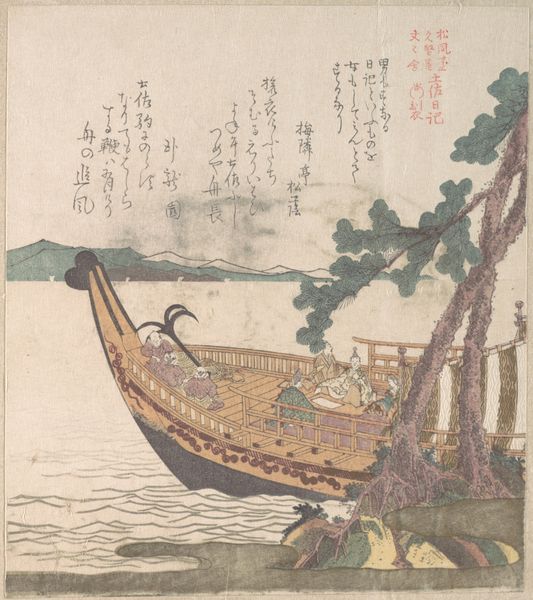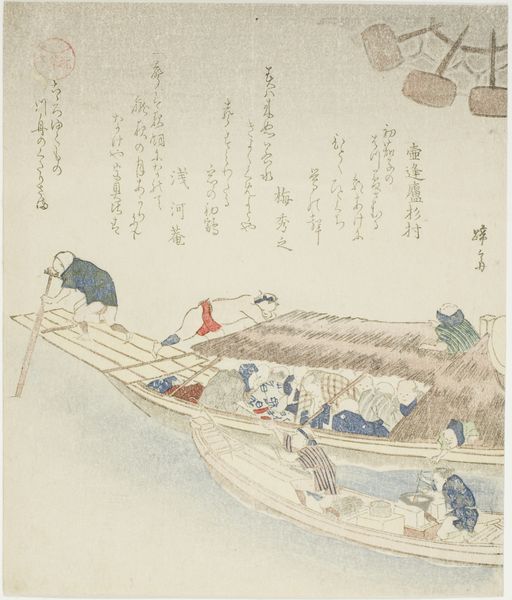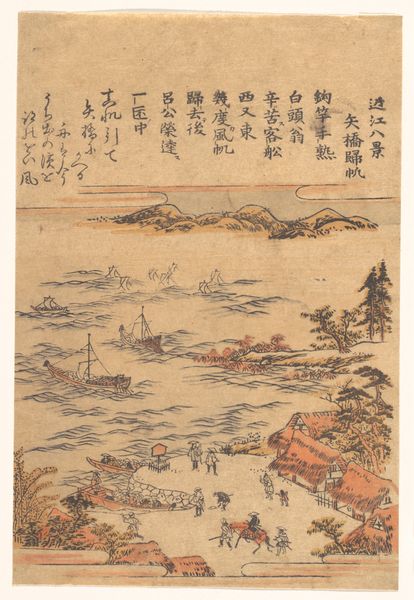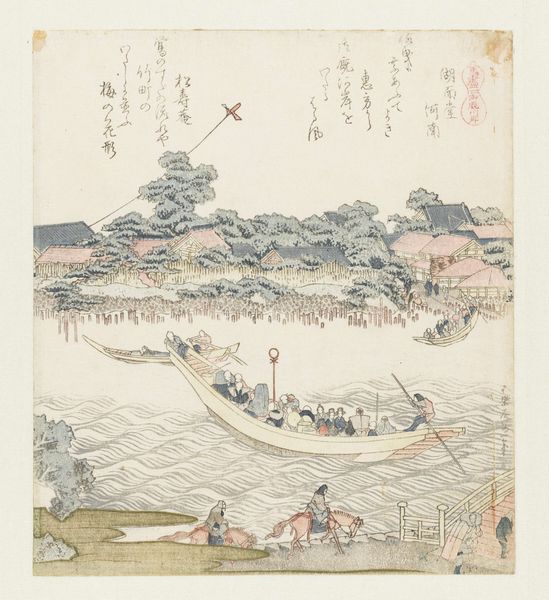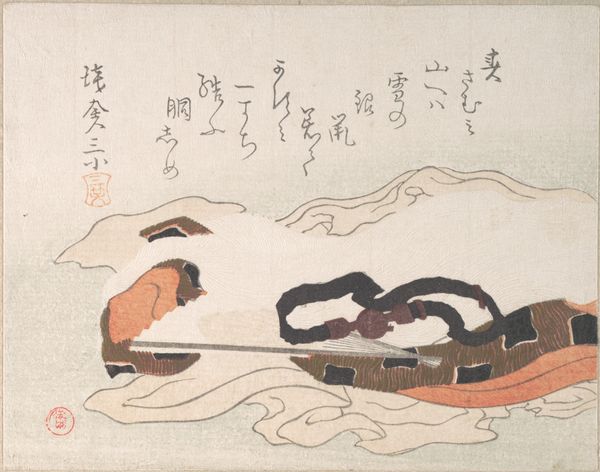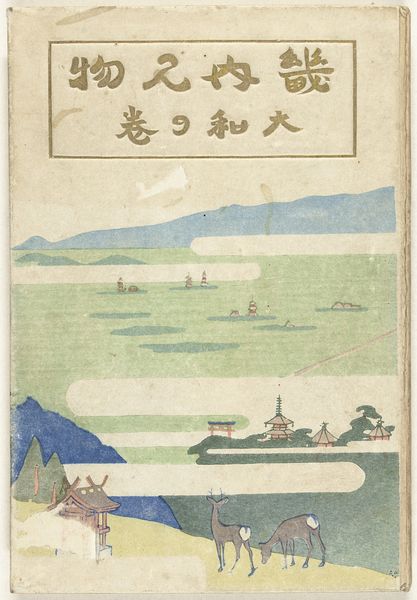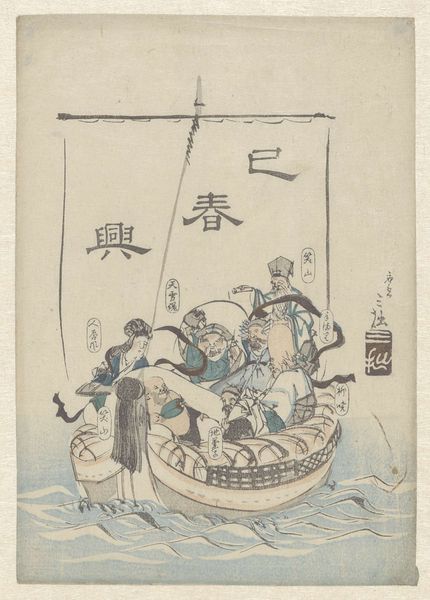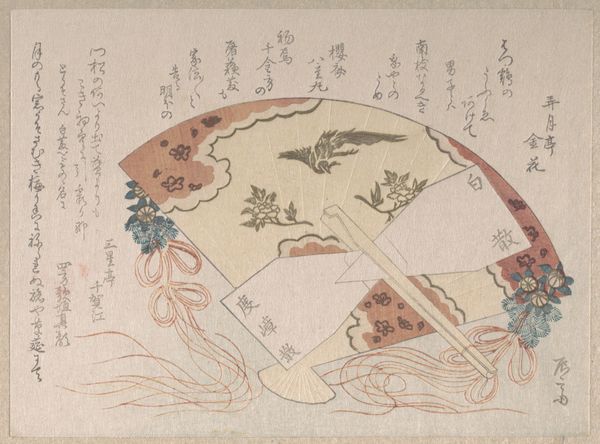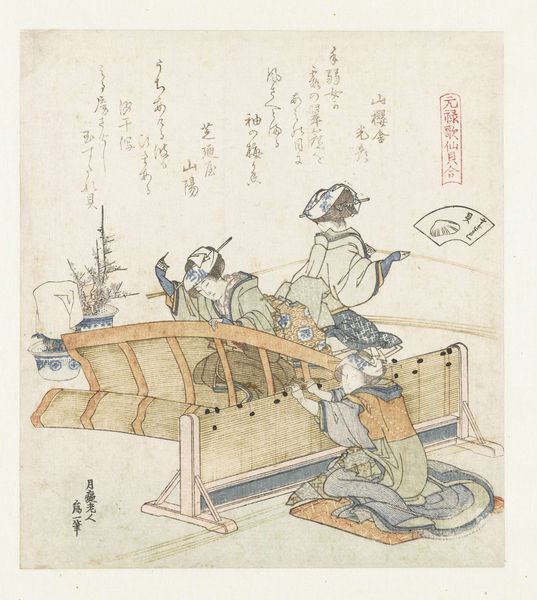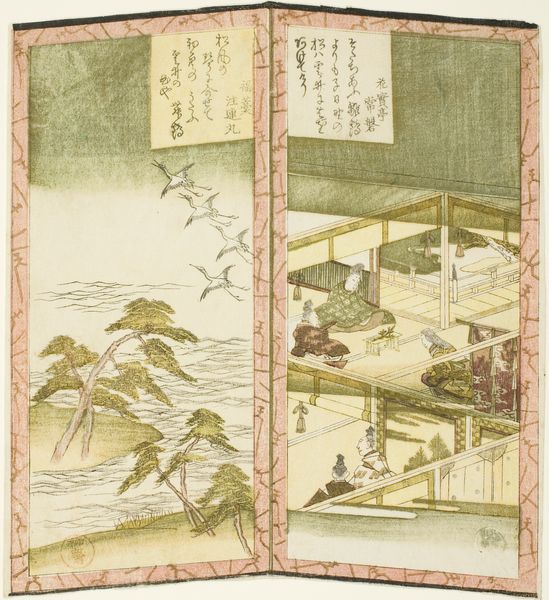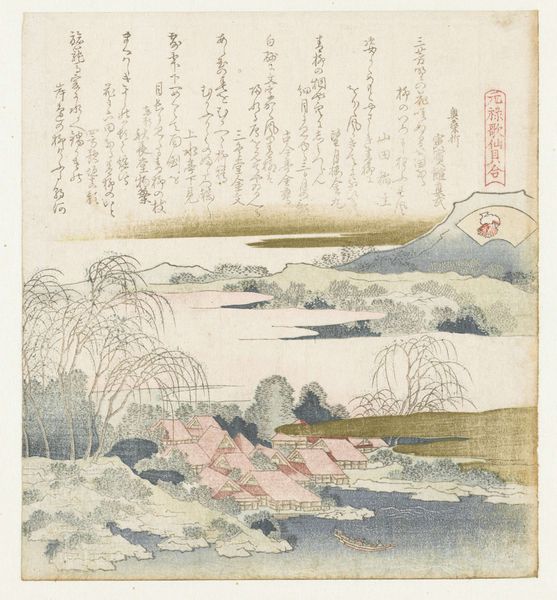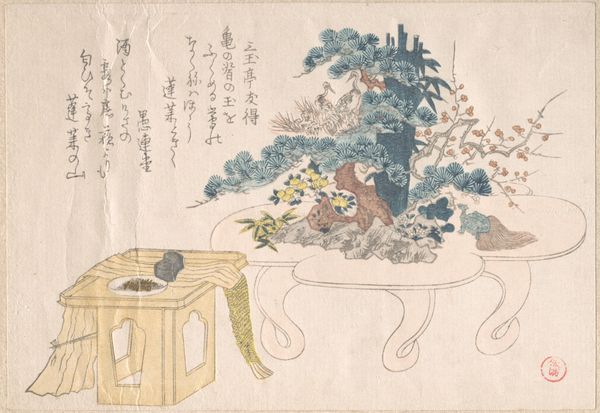
Takeda Mechanical Device (Takeda karakuri): Haku Rakuten (Chinese: Bai Juyi) and the fisherman c. early 19th century
0:00
0:00
print, watercolor, ink, woodblock-print
#
narrative-art
# print
#
asian-art
#
landscape
#
ukiyo-e
#
watercolor
#
ink
#
woodblock-print
Dimensions: 20.4 × 18.2 cm
Copyright: Public Domain
Curator: Here we have "Takeda Mechanical Device (Takeda karakuri): Haku Rakuten (Chinese: Bai Juyi) and the fisherman," a woodblock print with ink and watercolor, dating back to the early 19th century and created by Kubo Shunman. Editor: My first impression is how light and ethereal the piece feels. The pastel colors, the delicate lines... there's a real sense of gentle movement here. I'm immediately drawn to the boats. Curator: The narrative behind this Ukiyo-e print holds significant weight. Haku Rakuten, or Bai Juyi as he’s known in China, was a famous Tang dynasty poet. The encounter with the fisherman symbolizes a philosophical exchange between the privileged elite and the common man. Notice how the poet's boat is quite elaborate, even ornamented, with the phoenix detail near its stern. Editor: Interesting contrast with the small, undecorated boat of the fisherman! The choice of woodblock print, particularly at this time, points to a widening audience for art. It suggests a demand for narratives like this among a broader populace, beyond the elite circles traditionally associated with art patronage. And that border detail too, makes it feel both elevated and somehow mass-produced at the same time. Curator: Indeed. The materiality speaks volumes. The woodblock technique allowed for wider distribution of such stories and artistic styles, acting as a cultural bridge. What intrigues me further are the visual metaphors embedded within the landscape itself. The bridge, for example, may signify crossing between social statuses. Editor: I'm also wondering about the pigments themselves. How were they sourced, and who was involved in their creation? Each layer of color represents human effort, likely drawing from a global trade network even back then. Curator: Thinking of these colors, the gentle washes contribute to an overall sense of tranquility and even resignation. Bai Juyi, despite his high status, appears reflective, maybe even melancholic, suggesting the weight of existence crosses social boundaries. Editor: Seeing the scene interpreted in this readily reproducible format really makes you consider the complex labor dynamics involved. The carving of the blocks, the mixing of inks – the materials are never neutral; they're imbued with socio-economic history. Curator: Ultimately, this print presents a visual document deeply rooted in both cultural and class history. It encourages a look into the story it narrates. Editor: It's an artwork that prompts us to ponder about production as much as presentation and a world not only imagined, but made.
Comments
No comments
Be the first to comment and join the conversation on the ultimate creative platform.
